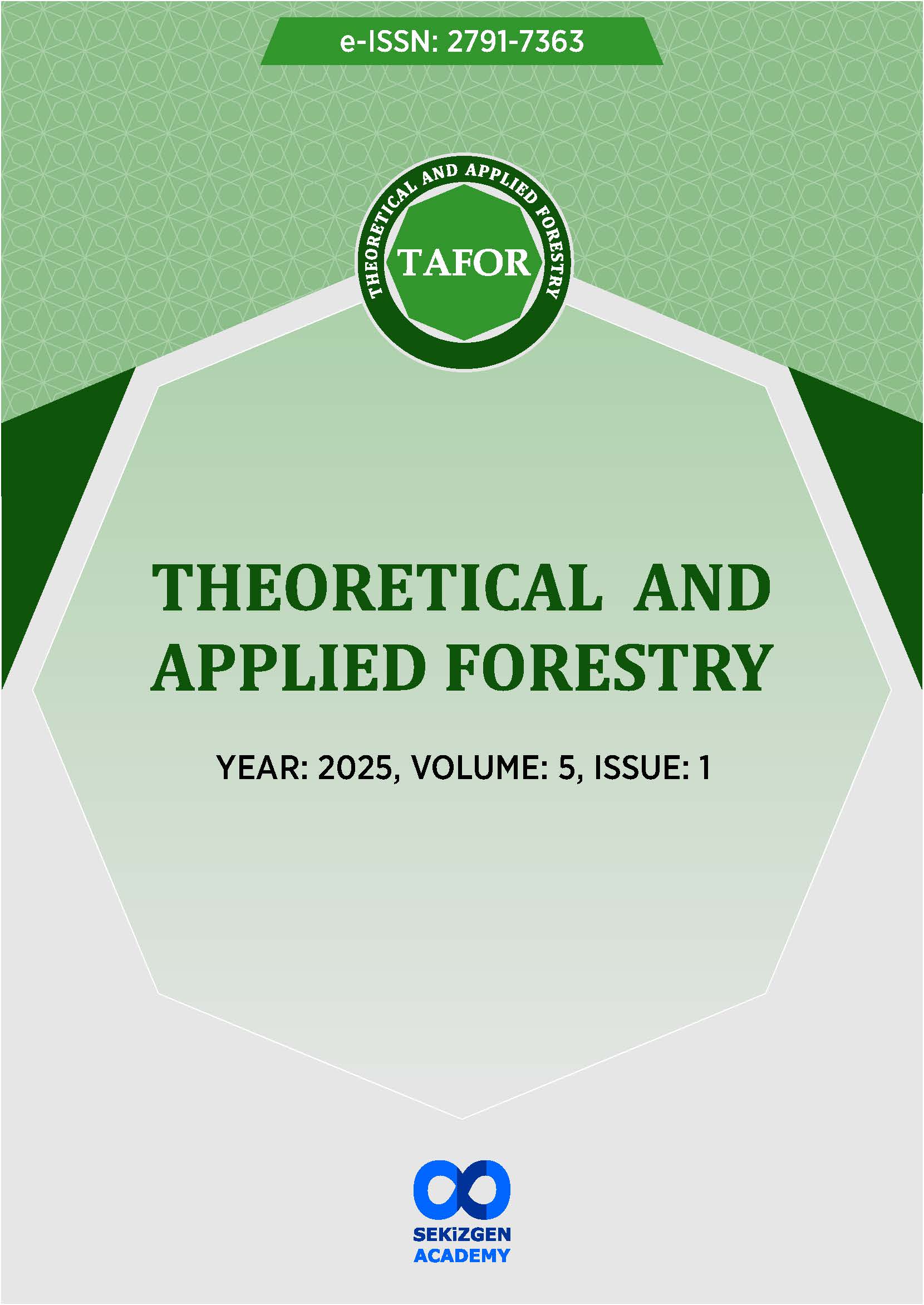Growth and fruit characteristics in Rosa canina L.
Keywords:
Rosa canina, Morphological variation, Phenotypic correlation, Fruit qualityAbstract
This study was conducted to determine the morphological and pomological variation within natural populations of Rosa canina L. in the Sarıveliler district of Karaman Province, Turkey. A total of 150 randomly selected individuals were evaluated for plant height (PH), crown diameter (CD), fruit length (FL), fruit width (FWi), and fruit weight (FWe). The collected data were analyzed using analysis of variance and phenotypic correlation analysis. The results revealed significant differences both among plants and within individuals in terms of fruit characteristics. Plant height (207.41 cm) and crown diameter (130.62 cm) exhibited high coefficients of variation (39.6% and 42.6%, respectively), while fruit weight showed 26.7% variation. Strong positive correlations were observed between flower length and fruit width (r = 0.750) as well as fruit weight (r = 0.878). In addition, significant correlations were identified between plant height and flower length (r = 0.375), and between plant height and fruit weight (r = 0.256). These findings demonstrate strong relationships between morphological and pomological traits in R. canina, and indicate substantial phenotypic diversity within natural populations. The results provide important insights for the conservation of the species as a genetic resource and its potential use in agricultural applications.
Downloads
References
Bağcı Y, Erdoğan R, Doğu S (2016). Ethnobotanical properties of plants growing in and around Sarıveliler (Karaman). Selçuk University Journal of Science Faculty, 42(1):84–107.
Baytop T (1999). Türkiye’de Bitkiler ile Tedavi: Geçmişte ve Bugün. İstanbul: Nobel Tıp Kitabevi.
Chrubasik C, Roufogalis BD, Müller-Ladner U, Chrubasik S (2008). A systematic review on the Rosa canina effect and efficacy profiles. Phytotherapy Research, 22(6):725–733.
Davis PH (1972). Flora of Turkey and the East Aegean Islands (Vol. 4). Edinburgh: Edinburgh University Press.
Demir F, Özcan M (2001). Chemical and technological properties of rose (Rosa canina L.) fruits grown wild in Turkey. Journal of Food Engineering, 47(4):333–336.
Ercişli, S. (2007). Chemical composition of fruits in some rose (Rosa spp.) species. Food Chemistry, 104(4):1379–1384.
Ercişli S, Eşitken A (2004). Fruit characteristics of native rose hip (Rosa spp.) selections from the Erzurum province of Turkey. New Zealand Journal of Crop and Horticultural Science, 32(1):51-53.
Falconer DS (1989). Introduction to Quantitative Genetics. 3rd Edition, Longman Scientific and Technical, New York.
Güner A, Aslan S, Ekim T, Vural M, Babaç MT (2012). Türkiye Bitkileri Listesi: Damarlı Bitkiler. Nezahat Gökyiğit Botanik Bahçesi ve Flora Araştırmaları Derneği Yayınları.
Nazaruk J, Borzym-Kluczyk M (2015). The role of triterpenes in the management of diabetes mellitus and its complications. Phytochemistry Reviews, 14(4):675–690.
Orhan IE, Özçelik B, Kartal M, Kan Y (2007). Antimicrobial and antiviral effects of essential oils from selected Umbelliferae and Labiatae plants and individual essential oil components. Turkish Journal of Biology, 32(1):25–30.
Rehder A (1940). Manual of Cultivated Trees and Shrubs Hardy in North America (2nd ed.). New York: Macmillan.
SPSS. (2011). IBM SPSS Statistics for Windows, Version 20.0., NY: IBM Corp.
Wissemann V (2003). Conventional taxonomy (wild roses). In L. C. D. S. Roberts, T. Debener, & S. Gudin (Eds.), Encyclopedia of Rose Science, Elsevier.
Downloads
Published
How to Cite
Issue
Section
License
Copyright (c) 2025 Sekizgen Academy

This work is licensed under a Creative Commons Attribution-NonCommercial 4.0 International License.



















